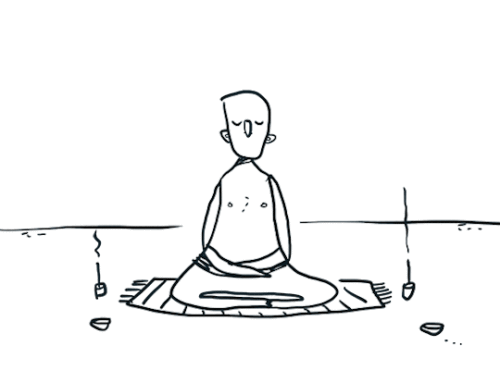“With the past, I have nothing to do; nor with the future. I live now.”
– Ralph Waldo Emerson
Last week I busted one of the biggest mindfulness myths: that it’s a strategy to control thoughts (click here if you missed it). This week I tackle the second of the big mindfulness myths: that it’s a strategy to control feelings. Let’s get myth-busting!
Mindfulness Myth #2
“Mindfulness is a way to relax and control or get rid of feelings”
Let’s get one thing clear from the start. There’s nothing wrong with wanting to feel relaxed, happy, content, and at ease. Every human I know wants this, and, of course, I do too. But how much control do we have over these feelings? Let’s do a little test. On the count of three, I want you to feel the happiest you’ve ever felt. Ready? One, two, three, GO!
How did you go? Are you jumping for joy? No? Neither am I. But I really like to feel happy! Ok, you could call to mind a memory of the happiest you’ve ever felt, and if you really focus, you could touch into some of that happiness. But there doesn’t seem to be a “happy switch” on the human mind that you can just flick on and auto-adjust your mood.
One more time, with feeling…
Here’s another test. We talked about the right toe in the last blog post. I’m going to extend that a little. I’d like for you to get in touch with all of the sensations in your right foot. Just like a spotlight moves around a stage, see if you can move the spotlight of your attention onto the right foot. See how curious you can be about what you notice. Notice your big toe, your second, third, fourth, and fifth toes. Notice the ball of the foot, notice the heel and the top of the foot. What temperature is your foot right now? Warm or cool? Can you feel the pressure of the foot resting on the ground or other surface? Can you feel the material of the sock covering the foot, or if you’re barefoot, the sensations of the skin resting on the floor or in your shoe? Continue pouring your awareness into your right foot for the next 5 seconds…. five… four… three… two… one…
Ok. Now I want you to make your entire right foot go numb. Don’t feel your foot at all. Not even a little bit! I’ll pause here for a few seconds again to give you a fighting chance. Five…four…three…two…one… How’d you go? Could you do it? I’m guessing not. I certainly can’t.
What does this mean?
What these two tests tell me is that I’m not very good at controlling my feelings. My feelings come and go. I’m thinking it’s the same for you. We are beings that feel all sorts of things in any given day. Let’s take today. I’ve felt hunger/fullness, warmth/coolness, tension/relaxation, pleasantness/unpleasantness, energised/tiredness. And it’s not even 1 pm!
The Whole You
By noticing what it is that is being experienced (i.e., pleasantness/unpleasantness), we build our ability to drop the struggle against unwanted feelings and we stop chasing after and clinging onto the feelings that we do want. And we do this so that we are free to focus our energy, awareness, and attention on whatever is important that is happening right here, right now. This can free us up from habitual reactivity, which may pull us into behaving UNlike the person we truly want to be, deep down inside (see below).
Road Rage Anyone?
If you have ever driven or ridden, you will probably have experienced anger and frustration on the road. This anger or frustration may lead you to react impulsively: giving a middle finger, shouting, or slapping the steering wheel. The Australian Transport Accident Commission produced a brilliant commercial illustrating how these reactions influence not just ourselves, but those around us. So if getting pulled into impulsively reacting on anger and frustration isn’t the way you want to live life, present-moment awareness training is one answer. By developing your skill at noticing how emotions and thoughts interact to pull you into habitual behavior, you open up a space. In this space is the freedom to choose your action (or inaction). As the existential psychologist Rollo May says:
“Between stimulus and response there is space. In that space is our power to choose our response. In our response lies our growth and our freedom.”
Present-moment awareness training is a radical approach to life. It is training in a radical openness to life as it is, and from this place, we develop the freedom to choose who we want to be, the qualities we want to cultivate, and the action we want to take.
Next time…
Now that we have looked at the myths, what’s the reality? Rather than talk more about what it is, I’d like to end with an invitation for you to experience what present-moment awareness training is. In the coming days, I will post another short blog with an audio exercise for you. If you like it and want to develop present-moment awareness skills with me in a one-to-one setting, or you would like help with getting “unstuck” and getting your life moving in a direction you want, I am currently offering limited appointments for counselling on Saturday’s. See my page for availability and rates and to book in.
